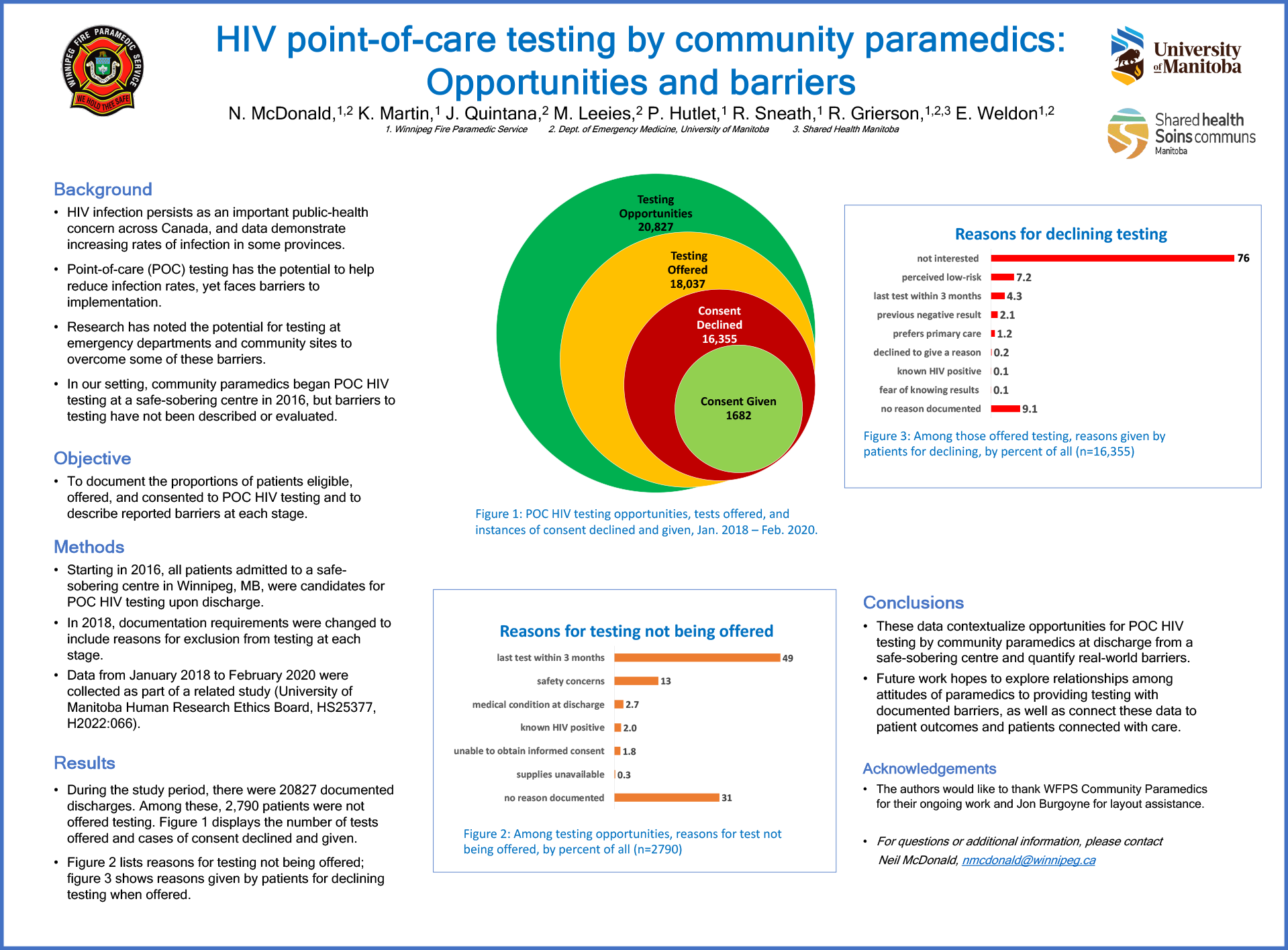|
HIV point-of-care testing by community paramedics: opportunities and barriers
Introduction
HIV infection persists as an important public-health concern across Canada, and data demonstrate increasing rates of infection in some provinces. Point-of-care (POC) testing has the potential to help reduce infection rates, yet faces barriers to implementation. Research has noted the potential for testing at emergency departments and community sites to overcome some of these barriers. In our setting, community paramedics began POC HIV testing at a safe-sobering centre in 2016, but barriers to testing have not been described or evaluated.
Objective
To document the proportions of patients eligible, offered, and consented to POC HIV testing and to describe reported barriers at each stage.
Methods
Starting in 2016, all patients admitted to a safe-sobering centre in a mid-size Canadian city were candidates for POC HIV testing upon discharge. In 2018, documentation requirements were changed to include reasons for exclusion from testing at each stage. Data from January 2018 to February 2020 were collected as part of a related study.
Results
During the study period, there were 20827 documented discharges. Of these, 2790 (13%) were not offered testing for the following reasons: last tested within three months (49%); safety concerns (13%); medical condition on discharge (2.7%); known HIV positive (2.0%); unable to obtain informed consent (1.8%); and supplies unavailable (0.3%). No reason was given in the remaining (31%) cases. Testing was offered to 18,037 patients, or a mean (SD) of 694 (95) patients per month. Among those to whom testing was offered, 1682 (9.3%) provided consent, representing a mean of 65 (19) per month. Among those offered testing, 16355 (90.7%) declined for the following reasons: not interested (76%); perceived to be low-risk (7.2%); last tested within three months (4.3%); previous negative result (2.1%); would prefer primary care provider (1.2%); declined to give a reason (0.2%); known HIV positive (0.1%); and fear of knowing result (0.1%). No reason was given in the remaining (9.1%) cases.
Conclusion
These data contextualize opportunities for POC HIV testing by community paramedics at discharge from a safe-sobering centre and quantify real-world barriers. Ongoing work will compare these data to patient outcomes and patients connected with care.
|



